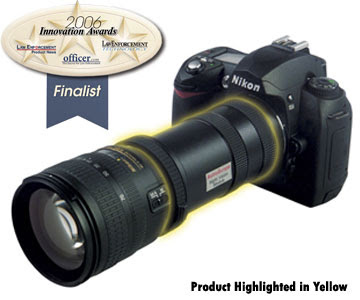Photographers control the camera and lens to "expose" the light recording material such as film to the required amount of light to form (on film) or "raw file" in digital cameras
which, after appropriate processing, is converted to a usable image. Digital cameras replace film with an electronic sensor based on light-sensitive electronics such as charge-coupled device or complementary metal-oxide-semiconductor technology. The resulting digital image is stored electronically, but can be reproduced on paper or film.
The is a type of photographic camera which takes a rapid sequence of photographs on strips of film. In contrast to a still camera, which captures a single snapshot at a time, the movie camera takes a series of images, each called a "frame". This is accomplished through an intermittent mechanism. The frames are later played back in a movie projector at a specific speed, called the "frame rate" (number of frames per second). While viewing, a person's eyes and brain merge the separate pictures together to create the illusion of motion.
In all but certain specialized cameras, the process of obtaining a usable exposure must involve the use, manually or automatically, of a few controls to ensure the photograph is clear, sharp and well illuminated. The controls usually include but are not limited to the following:
*FOCUS - the adjustment to place the sharpest focus where it is desired on the subject
* APERTURE – adjustment of the iris, measured as F- number, which controls the amount of light passing through the lens. Aperture also has an effect on focus and depth of field namely, the smaller the opening aperture, the less light but the greater the depth of field--that is, the greater the range within which objects appear to be sharply focused. The current focal length divided by the f-number gives the actual aperture size in millimeters.
* SHUTTER SPEED – adjustment of the speed (often expressed either as fractions of seconds or as an angle, with mechanical shutters) of the shutter to control the amount of time during which the imaging medium is exposed to light for each exposure. Shutter speed may be used to control the amount of light striking the image plane; 'faster' shutter speeds (that is, those of shorter duration) decrease both the amount of light and the amount of image blurring from motion of the subject and/or camera.
* WHITE BALANCE – on digital cameras, electronic compensation for the color temperature associated with a given set of lighting conditions, ensuring that white light is registered as such on the imaging chip and therefore that the colors in the frame will appear natural. On mechanical, film-based cameras, this function is served by the operator's choice of film stock or with color correction filters. In addition to using white balance to register natural coloration of the image, photographers may employ white balance to aesthetic end, for example white balancing to a blue object in order to obtain a warm color temperature.
* METERING – measurement of exposure so that highlights and shadows are exposed according to the photographer's wishes. Many modern cameras meter and set exposure automatically. Before automatic exposure, correct exposure was accomplished with the use of a separate Light metering device or by the photographer's knowledge and experience of gauging correct settings. To translate the amount of light into a usable aperture and shutter speed, the meter needs to adjust for the sensitivity of the film or sensor to light. This is done by setting the "film speed" or ISO sensitivity into the meter.
* ISO– traditionally used to "tell the camera" the Film speed of the selected film on film cameras, ISO speeds are employed on modern digital cameras as an indication of the system's GAIN from light to numerical output and to control the automatic exposure system. A correct combination of ISO speed, aperture, and shutter speed leads to an image that is neither too dark nor too light.
* Auto Focus point – on some cameras, the selection of a point in the imaging frame upon which the auto-focus system will attempt to focus. Many Single Lens Reflex Camera (SLR) feature multiple auto-focus points in the viewfinder.
Many other elements of the imaging device itself may have a pronounced effect on the quality and or aesthetic effect of a given photograph; among them are:
* Focal length and type of lens ( Telephoto or "long" lens, Macro, Wide angle, Fisheye,
or Zoom )
* Filters placed between the subject and the light recording material, either in front of or behind the lens
* Inherent sensitivity of the medium to light intensity and color/wavelengths.
* The nature of the light recording material, for example its resolution as measured in pixels or grains of Silver halide. .
search box

Custom Search
result



